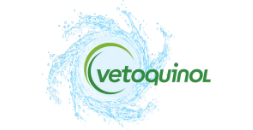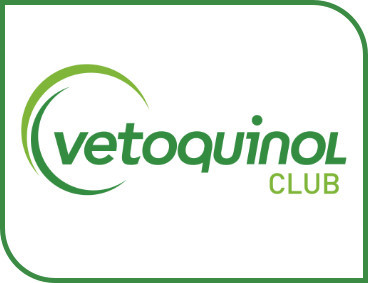Some areas in the clinic represent a higher risk for transmission of infectious disease than others and require different types of biosecurity measures, and different levels of disinfection.
Which areas are the most at risk?
View
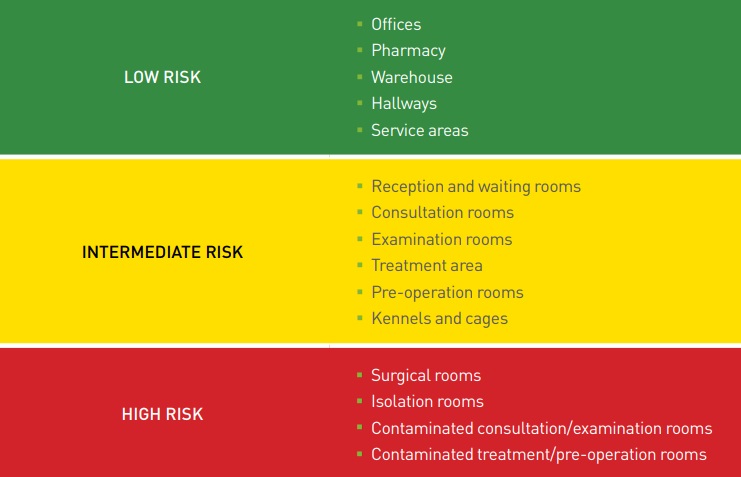
 LOW RISK
LOW RISK
The main criteria to designate an area in a veterinary clinic as "low risk" is the low likelihood of exposure to infectious disease. Low contamination risk areas include: the offices, pharmacy, warehouse, hallways, and service areas. Low to intermediate level disinfection is recommended on at least a weekly basis in these areas.
Use of a cleaner followed by a disinfectant is ideal, however, in these low risk areas, use of a single product with both cleaning and disinfection properties such as Clinicide, BioSentry® 904 or Virkon® may be adequate on most days. This is referred to as "one-step cleaning and disinfection".
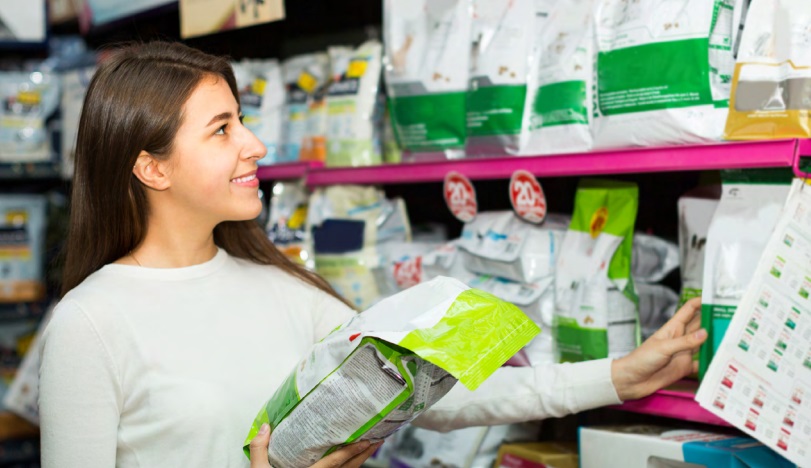

INTERMEDIATE RISK
Intermediate risk areas are where there is no known infectious disease, although an increased risk of exposure is present. These areas include: the waiting room, consultation and examination rooms, treatment and pre-operation rooms, cages, and kennels. Low to intermediate level disinfection is recommended on at least a daily basis in these areas. Kennels, cages, and animal handling surfaces should be disinfected between patients. A cleaning and disinfection protocol using cleaners such as Biosolve™ Plus* or Biosolve™ Acid-A-Foam XL and disinfectants such as Clinicide, BioSentry® 904 or Virkon® is recommended.
*Warning*
Wear protective gloves, protective clothing, eye protection and face protection.
Causes severe skin burns and eye damage.
May cause an allergic skin reaction.
Causes damage to organs (Respiratory Tract) if inhaled
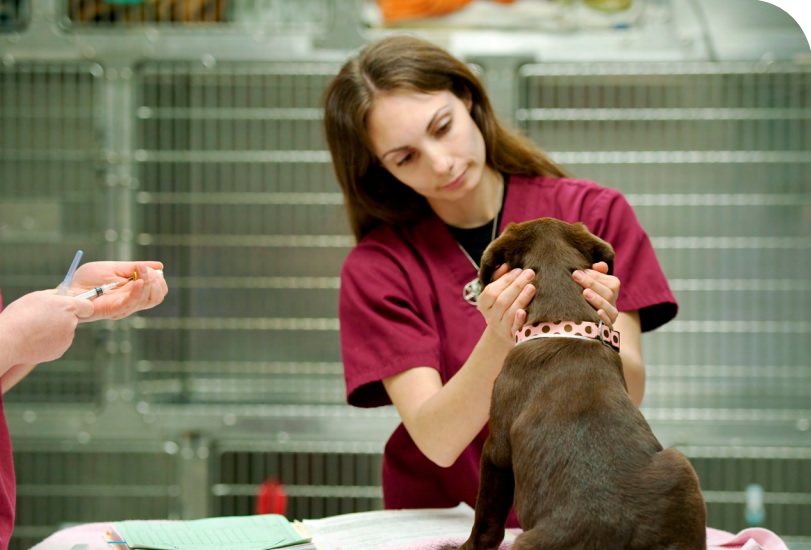
HIGH RISK
High risk areas are where vulnerable, sick or contagious animals are present, or where there is high traffic with contaminated footwear. These contaminated areas include: the surgical rooms, isolation rooms, and potentially consultation/ examination rooms and treatment/pre-operation rooms. These areas need to be cleaned and disinfected on at least a daily basis. Kennels, cages, and animal handling surfaces should be disinfected between patients. Cleaning and disinfection is recommended using cleaners such as Biosolve™ Plus* or Biosolve™ Acid-A-Foam XL. It is recommended to disinfect with Virkon® in these high risk areas. Immediately clean and disinfect after each patient, or spill or surface contamination (urine, feces, vomit, body fluids).
*Warning*
Wear protective gloves, protective clothing, eye protection and face protection.
Causes severe skin burns and eye damage.
May cause an allergic skin reaction.
Causes damage to organs (Respiratory Tract) if inhaled
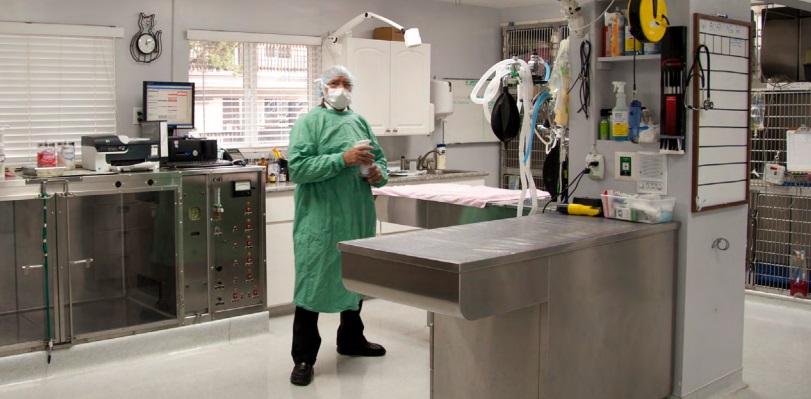
TABLE OF CONTENTS
1 ► PRINCIPLES OF CLEANING
Biofilm
Mineral deposits
What is a cleaner?
Selection of an appropriate cleaner
2 ► PRINCIPLES OF DISINFECTION
Sensitivity to disinfectants
All disinfectants are not created equally
3 ► CLEANING AND DISINFECTION STEPS
Removal of organic material
Cleaner application
Disinfection
4 ► CLEANING AND DISINFECTION STEPS FOR ANIMAL HOUSING
Runs and kennels
Cages
Large animal stalls
Calf crates
5 ► RISK ZONES WITHIN THE CLINIC
Low risk
Intermediate risk
High risk
6 ► APPLICATION METHODS
Spraying versus foaming
Equipment
Dedication of equipment by risk zone
Footwear disinfection
7 ► VETOQUINOL CLEANING AND DISINFECTION PRODUCTS
Vetoquinol Cleaners
Biosolve™ Plus
Biosolve™ AFC
Vetoquinol Disinfectants
Virkon®
BioSentry® 904
Clinicide
8 ► FREQUENTLY ASKED QUESTIONS
9 ► BIOSECURITY REFERENCES
QUIZ ► TEST YOUR KNOWLEDGE
Vetocontact
Access restricted to veterinarians
